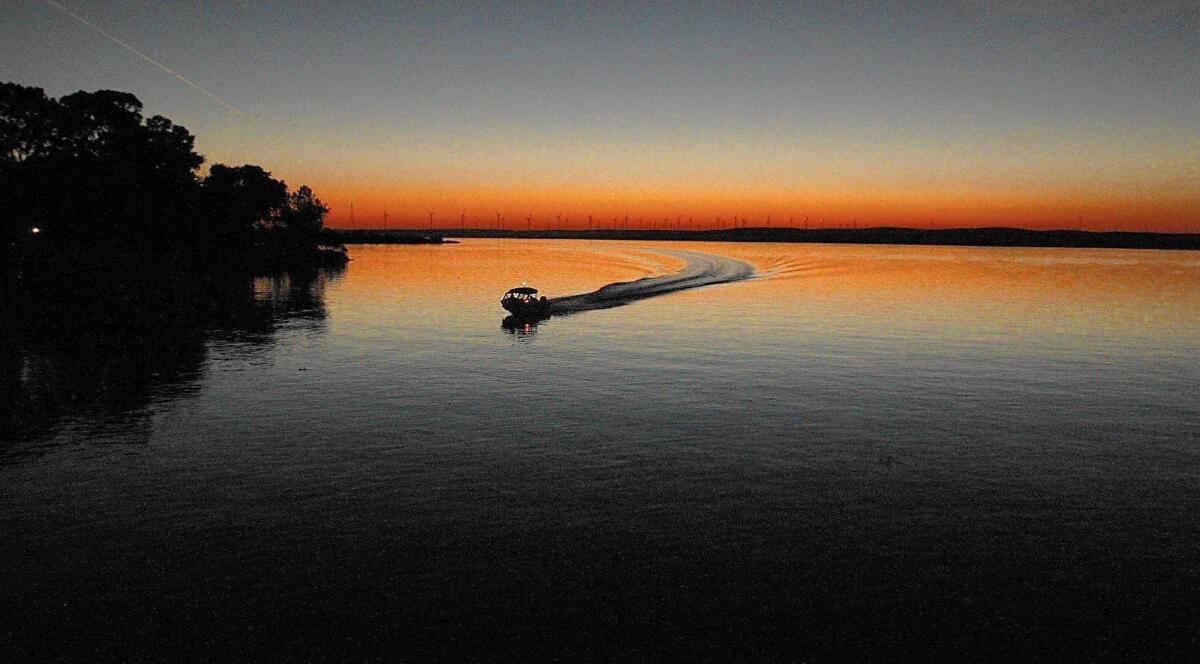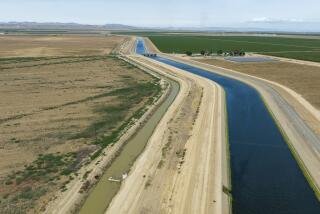Newsom administration trying again for a river flow deal

- Share via
The Newsom administration Tuesday floated a proposal to avert a protracted legal battle over new state standards that would make some of California’s biggest water users cut their river diversions to help struggling fish populations.
State officials see a settlement as the linchpin of administration water policies that have been bogged down in the perennial conflicts over the Sacramento-San Joaquin Delta, a source of water for much of California and home to some of its most threatened native fish.
“These agreements … will significantly increase the required amount of water flowing through rivers and the delta,” Gov. Gavin Newsom said in a Cal Matters op-ed published Tuesday afternoon. “They require a historic addition of 60,000 acres of critical habitat.”
He added: “My administration is proposing a path forward, one that will move past the old water binaries and set us up for a secure and prosperous water future.”
It was unclear if key water players would follow the path.
The plan expands on an earlier settlement blueprint that was roundly denounced by environmental and fishing groups. At least some of them remained unimpressed with the latest version. Most of the big farm districts that have sued to block the new state flow requirements were silent.
Jeffrey Kightlinger, general manager of the Metropolitan Water District of Southern California — the biggest urban user of delta supplies — called it “a promising step,” adding that “more work lies ahead.”
Looming in the background is the fight over the Trump administration rollbacks of federal endangered species protections for imperiled delta fish. The Newsom administration announced last fall that it would sue to block the rollbacks but has yet to do so.
“While we are committed to collaborating with the federal government where we can … we will continue to utilize every tool at our disposal — including legal action — to ensure the federal government fulfills its obligation” to protect the environment, Newsom said.
The new proposal provides more fish flows than the first draft, but the volume is still less than required under new state rules adopted at the end of the Brown administration.
And the state rules in turn require significantly lower flows than scientists have said is necessary to partially restore salmon runs that have all but vanished on many rivers in Central and Northern California.
Those rules, adopted by the State Water Resources Control Board in late 2018, were seen as the beginning of a historic attempt to make cities and farms take less water from the heavily tapped river systems that feed the delta, as well as the delta itself.
Not only would leaving more water in rivers improve water quality and help struggling fish populations, it would also send more flow through the delta, which is part of the West Coast’s largest estuary.
The state board made it known that it was open to a settlement with water users to avoid years of court battles. The Brown administration began settlement talks months before the board vote, crafting a proposal that the Newsom administration has now revised.
The changes have not mollified critics.
“From what we can tell, this deal is built on quicksand instead of credible science,” said Rachel Zwillinger, water policy adviser of Defenders of Wildlife, an environmental group that took part in earlier settlement talks.
“When negotiating a deal, an essential ingredient of any successful compromise is that it meets existing environmental protection laws,” she said. “This deal will not and therefore will fail.”
Zwillinger complained that the proposal appeared to let delta pumpers largely off the hook for greater flows, clearing the way for the increased exports that the Trump rollbacks would allow.
Two conservation groups, American Rivers and the Environmental Defense Fund, said they were encouraged by the state proposal but stopped short of fully endorsing it.
Department of Water Resources Director Karla Nemeth said delta exports by the State Water Project, which supplies the Metropolitan Water District, would be the same or less as they are now.
The settlement would over many years increase flows in delta tributaries and the estuary by 800,000 to 900,000 acre feet compared to current average conditions, state officials said.
That would be achieved through a variety of measures. Some diversions would be cut. A new fee on water users, as well as state money, would be used to fund water purchases for the environment. New projects, such as groundwater recharge, would also be funded to free up surface water supplies.
All told, the deal calls for more than $5 billion in spending on habitat improvements, water purchases and land fallowing over a 15-year period. State taxpayers would provide 42% of that, water users 44% and the federal government 14%.
While the flows are less than those mandated by the state board, the deal calls for more habitat restoration, officials noted.
“We are confident that this is scientifically adequate,” Natural Resources Secretary Wade Crowfoot said.






